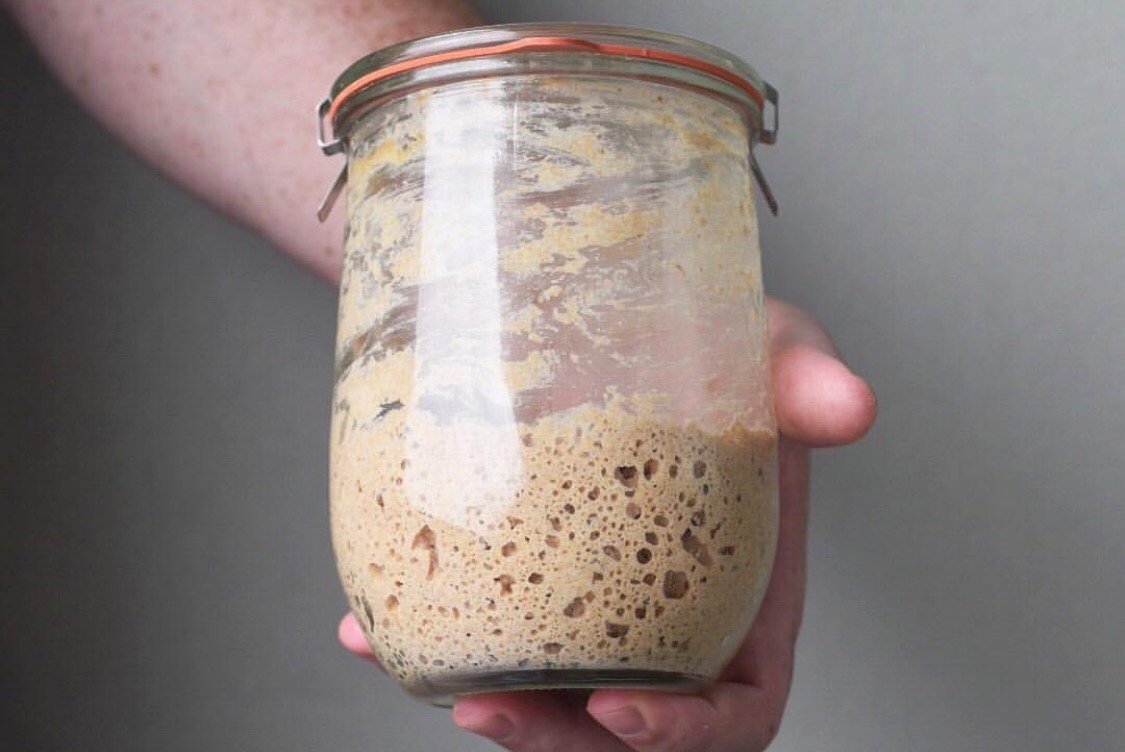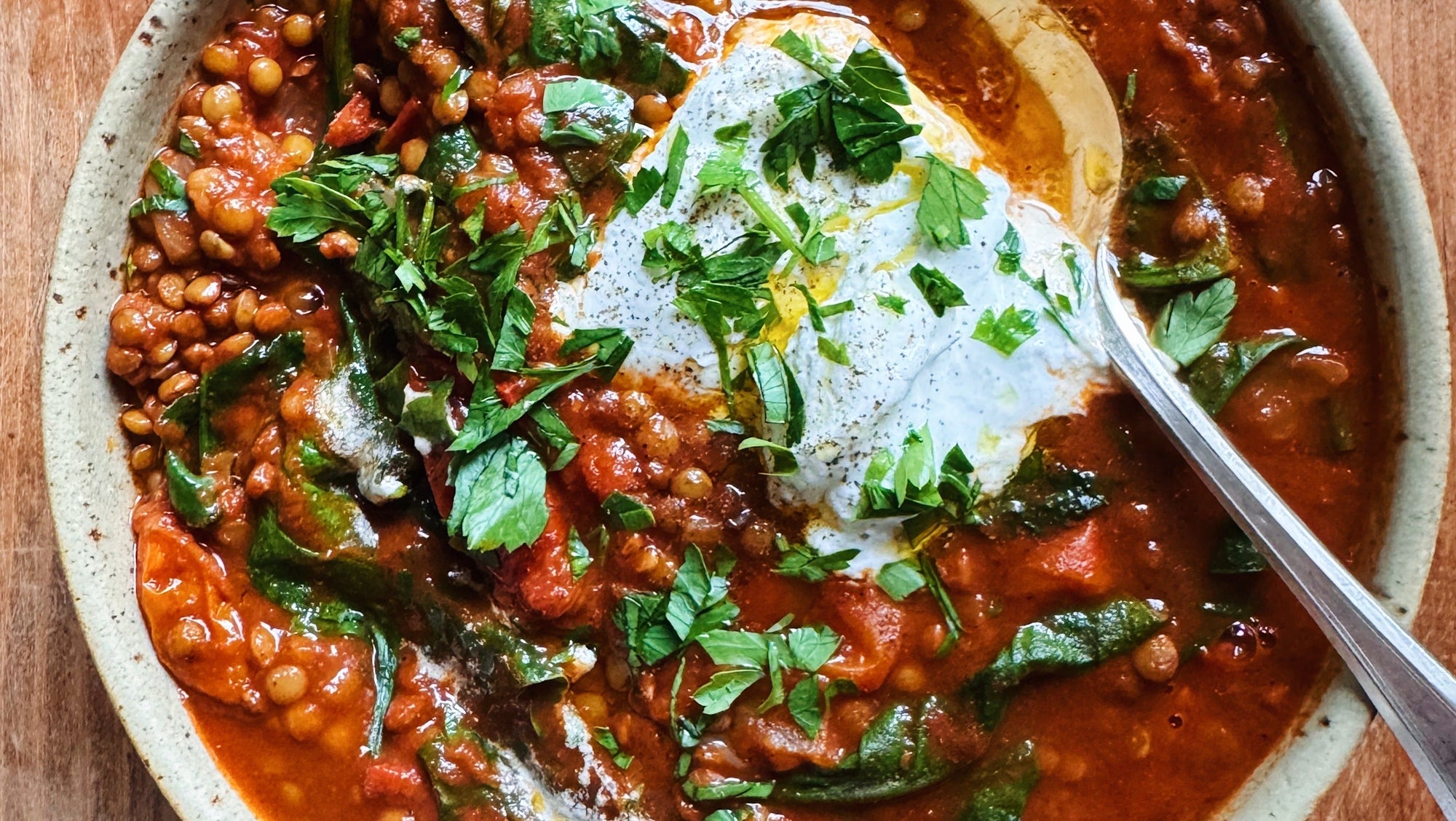Making and maintaining a sourdough starter may seem complex, but it is actually quite simple. Wild yeast is in the air all around us, and with a few simple steps you can harness it and make a starter that will leaven homemade sourdough bread beautifully. If you do not have access to an already maintained sourdough starter, create your own!
Sourdough starters are finicky by nature and every variable (the temperature of your house, the flour, the mineral content of the water, and the temperature of the water) can affect the speed in which the yeast activates and the amount of time it takes for your sourdough starter to feed and rise in an expected manner. Above all, sourdough starters like consistency, which is a continuing theme in the directions that follow for creating and maintaining your sourdough starter.
The flour you use makes a big difference in the behaviour of your sourdough starter. Whole grain flours tend to work much faster, but can be difficult to work with. We have developed a method for creating a sourdough starter with our Flourist Sifted Red Spring Wheat Flour, which we have found behaves the closest to standard commercial bread flour {but with without the nasty additives}, and creates a sourdough starter that is easy to use and maintain. You can also use the Flourist Sifted Red Fife Flour for great results too. A kitchen scale is recommended for anyone looking to experiment with sourdough baking.
Making a Sourdough Starter
Combine equal parts Flourist Sifted Red Spring Wheat Flour and room temperature water (we prefer 100g of each). Cover and let it sit somewhere the temperature is consistent for 24-48 hours. Check after 24 hours to see if any bubbles have formed in the mix. The presence of bubbles is an indication that the yeast from the air is feeding on the sugars in the flour and is releasing carbon dioxide. It is important to note that you should ideally feed your starter at the same time each day, so choose a time either in the morning or evening depending on what works with your schedule.
Once you have reached the stage of seeing visual bubbles, you need to begin feeding your starter. It will take about five or six "feedings" before it begins to behave consistently and is ready for you to begin baking with. Ideally, feed your new starter for a week before using it to ensure that it has gotten used to its routine of feedings.
Feeding a Sourdough Starter
In order to maintain a standard amount of sourdough starter, weigh out 100g of starter for the feeding and discard the rest. Feed with 100g Flourist Sifted Red Spring Wheat Flour and 100g water each time. Discarding the extra may seem like a lot of waste, but once your starter is ready to be used the discard can be used in so many different recipes such as waffles, crackers, and muffins. Perform the first feeding and let sit for 24 hours.
Repeat this step consistently, feeding your starter at the same time each day, for at least 5 days. Your starter is ideal to bake with when it has doubled in size after 24 hours, is bubbly, and has a nice sour smell. It is ideal to maintain your starter in this manner moving forward.
Once you are ready to use your starter you may find that you need to increase the amount that you have for your recipe. A good rule of thumb is to maintain a ratio of 1:1:1 (equal parts sourdough starter, water, and flour). The amount can be increased or decreased as needed. It is nice to keep a small amount when you are not intending to use it for baking as then there is less discard waste to manage.
Maintaining your starter at room temperature ideally requires a daily feeding. If you find this too cumbersome, you can keep your starter in the fridge and feed it once a week. If you keep it in the fridge it is a good idea to let it sit out after feeding for about 8-12 hours, so that the yeast has time to reactivate itself before putting it back in the fridge. Putting your starter in the fridge "hibernates" the yeast, so we suggest you remove it from the fridge and feed it for at least one day, ideally two, before you use it again to make bread. This gives the yeast time to "wake up" and become active again.
Ready to bake? Get our Basic Sourdough Boule recipe here.
Photo Credit: Flourist customer Laura Brehaut



Comments
Hi there.
Must the same kind of flour always be used i.e. starting and feeding, or are the Red Spring and Red Fife flours interchangable?
Thank you.
Hi René! We would recommend using warmer water to help offset the cold temperature of the flour you are using. If possible, it would also be great to store the flour you know you’ll be using for the next feeding outside of the freezer as that cold temperature could be causing this inactivity. I hope this helps!
Hi there Francesco! You can certainly lower the hydration of your starter once it matures, but keep in mind that a more liquid, hydrated starter had more activity so things might go a bit slower for you!
Hello Flourist,
I’ve started my sourdough bread journey. I ordered the starter flour bundle and also began my sourdough starter by following every step of this guide. However, after 5 days of feeding my starter at the same time with the same quantity every day, the starter is still at the same height in the container after 24h. I store the flour in the freezer between feedings and I’m using room temperature water. The water I’m using might be a bit hard. What should I do ?
Hi there Donna – you can definitely freeze your starter for longer storage. No special storage tricks, just make sure to put it in a sealed freezer safe container or jar and leave enough room for expansion. The starter will need to taken out well in advance of when you’re planning on baking, as it will require at least a feeding or two to get it active again. Hope this helps!
Hey!
What is your take on converting your starter to 80% once it is mature?
Thanks again!
Can you freeze starter for longer storage. If so is there a certain way to do it?
Thanks
Hi there Del – it’s best to not put a tight lid on your starter jar as the gas buildup could cause the jar to break. It is could to loosely cover the jar to keep things from falling in and to keep the starter damp – even just resting the lid on top of the jar works great!
When you leave the starter out to feed, and/or rest, does the lid stay on, lightly on or off completely? Thanks!
Hi there Tara! For the ratios of feeding we provide in this recipe (100 grams of water and 100 grams of flour for 100 grams of starter) a 2 pint jar should work great! Happy baking!